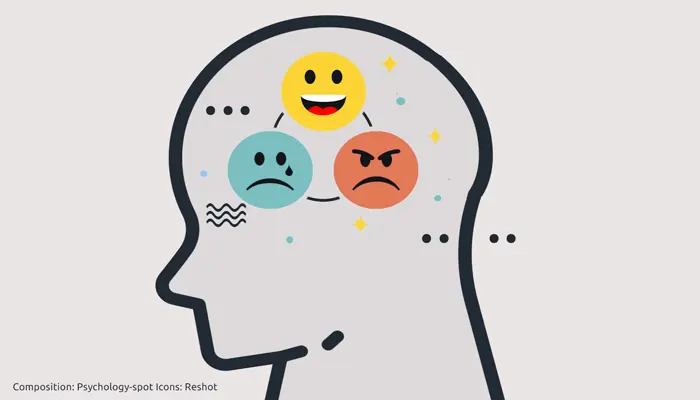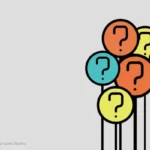
We all carry a small child inside. That child is a source of joy, creativity and authenticity, but also of fear, anguish and bewilderment. With his bundle of lights and shadows, that inner child ends up influencing our decisions and emotional well-being, so it is important that we get to know him, embrace him, and heal his wounds. In fact, making peace with our inner child will not only be extremely liberating but also accelerate our path of personal growth.
What is the inner child exactly?
The idea of the inner child is attributed to Carl Gustav Jung as this psychoanalyst created the concept in his divine child archetype. However, the Gestalt, a psychological school for which the first years of life are essential to shape the most vulnerable and sensitive psychological structure of our “self”, took up and spread the concept of the inner child.
According to Gestalt, the psychological structure that we can call “inner child” is formed from the positive and negative experiences that we have in our childhood. However, as we grow older, that inner child hides in the depths of the subconscious.
This psychological configuration remains latent, as a metaphorical and figurative reality, but quite powerful, that comes to light in different circumstances, such as when we need to resort to imagination and creativity, when we relive an old fear or if anguish invades us.
Within the framework of the Self Theory, that child is one of the different facets of our identity, which would not be monolithic and unified as we usually think, but rather a mosaic made up of a multiplicity of “selves” that take command when it is necessary.
On the other hand, for Roberto Assagioli, that inner child would actually be a psychosynthesis of all ages, representing the transition from one to another. In practice, it would not only be a training where our childhood experiences are accumulated, but it also combines other stages of development, such as adolescence and youth.
From this perspective, the inner child prevents a stage from being left behind, buried in oblivion and, in a certain way, contributes to making all of them part of who we are today. Assagioli argues that the psychosynthesis of times can be beneficial when we are able to keep the best of each one alive, but it becomes a burden when we carry unresolved traumas and conflicts.
In fact, a study carried out at the Luleå University of Technology concluded, after analyzing the level of psychological well-being of the elderly, that “The presence of the inner child can be a source of development throughout life or could interfere with the evolution of the person” when their wounds are not healed or attention is not paid to those contents.
The 5 signs that reveal a wounded inner child
Since we are usually disconnected from our inner child, we don’t usually pay attention to his calls for help. However, there are some signs that reveal a wounded inner child that needs to be healed:
1. Fear of abandonment
Many inner child wounds are due to emotional neglect suffered in childhood. If we have felt abandoned, perhaps because our parents or other adults were not emotionally available, it is likely that we have not been able to develop a secure attachment, so we carry that fear of abandonment into adult life.
When our inner child fears being abandoned, it can take two paths: push us to emotional dependency since we feel unworthy of being loved, which usually creates submissive relationships, or condemn us to loneliness, pushing people away so as not to “get attached” and then disappointed.
In short, an inner child who fears being abandoned is incapable of establishing mature and healthy relationships. Therefore, these adults are not capable of surrendering without reservations and fully and confidently enjoying emotional ties because these are always clouded by the shadow of fear of abandonment.
2. Feeling of exaggerated guilt
When things get out of our control, we tend to look for scapegoats. As a result, when life goes awry or uphill, many adults consciously or unconsciously blame their children. Children perceive it and end up carrying blame that does not correspond to them.
For that reason, guilt is a common sign of a wounded inner child. If we are not able to let go of that feeling of responsibility for everything that happens, it is likely that we constantly apologize, even for things that do not depend on us and for which we are not responsible.
That hyper-responsible inner child generates a permanent feeling of guilt, so that we will have the tendency to offer ourselves as scapegoats. Just as we are not capable of putting limits, these situations can lead us to toxic relationships in which others take advantage of that discomfort by emotionally manipulating us.
3. Lack of self-confidence
If when we were little the people who should be our source of confidence and security made us feel the opposite, it is not surprising that our inner child continues to be insecure. Lack of approval in the first years of life, excessive criticism, lack of praise, pressure for performance and constant comparisons with more “capable” peers often generate a vulnerable personality.
An inner child who does not trust his abilities will end up being reflected in behaviors such as a reluctance to take risks, enormous anguish in the face of changes, and difficulties in undertaking new projects. That lack of self-confidence is often related to low self-esteem.
That wounded inner child not only makes us doubt our potential, but also “protects” us so that we don’t even try. He makes us think that we are going to fail before we take the first step and often overlooks our successes or potential to focus only on mistakes, failures and weaknesses.
4. Getting angry about everything
Anger is a universal emotion. We all experience it at some point. However, the way we express that anger changes. If we constantly get angry and lose the control for inconsequential things with some frequency, it is possible that deep down it is due to a wounded inner child.
If in childhood many of our emotional needs were not met, it is likely that our inner child has accumulated a lot of resentment. He may feel angry with the world or believe that it “owes him something.”
As a result, we do not react in an adult way to setbacks, conflicts, or simple differences of opinion, but deal with these situations in a regressive way, through angry outbursts or tantrums, as if we were small children unable to manage that frustration.
5. Excessive ego
Part of the process of growing up is understanding that we are not alone in the world. Little by little, children are abandoning their egocentric position and developing empathy. This allows us to maintain more profitable and mature interpersonal relationships.
If the inner child has not grown up, he will try to impose his egocentric view of life. In that case, they are adults with an inordinate ego who believe they are the center of the universe. These people want others to orbit around them and pay homage to them.
However, deep down that level of narcissism hides a fragile “self”, a child who has not grown up and hides behind that arrogant mask so as not to show his insecurities. Obviously, by not acknowledging his problems, he condemns himself to a loop in which he will end up alienating others and making the same mistakes over and over again.
The cost of ignoring our inner child
Most people who call themselves adults are not adults at all. We all get old, but getting old is not synonymous with maturing. The simple passing of the years is not enough to become mature adults. True maturity consists in recognizing, accepting and taking responsibility for loving and healing the inner child. Unfortunately, most adults never do.
Instead, they often ignore, forget, belittle, abandon, or even reject their inner child. It’s not even their fault. Society tells us to “grow up” and forget childish things. In theory, to enter the adult world we must lose many of the childhood characteristics, such as sensitivity, spontaneity, innocence, joy for little things and even imagination. Being adults, sometimes, even means shutting down what bothers us or relegating ourselves to the background.
To be adults we must also control our emotions, although that often does not mean being able to manage them assertively, but only hiding or repressing them. Therefore, many adults do not feel free to express their fears, anger or suffering. Thus, most people are convinced that they have grown up because they have discarded childish attitudes. However, if we don’t embrace our inner child to heal its wounds, it will continue to negatively influence our lives.
A wounded inner child can self-sabotage us in many ways: causing us to display self-destructive behaviors, to assume self-centered attitudes that affect our relationships, or to become emotionally dependent due to fear of abandonment. Those who have become disconnected from their inner child often also become extremely rigid, unable to adapt to changes in the world. In these cases, it is not an “adult self” that runs our lives, but a hurt inner child and probably angry, frustrated or scared.
Many times that inner child is activated and pushes us to act in an impulsive and childish way, having real tantrums with fits of anger or frustration. Other times it makes us feel anguished and overwhelmed at the slightest obstacle, as if we were defenseless children without the necessary psychological tools to face life.
When we have a wounded inner child or have become too disconnected from that part of us, we can feel like we are walking with a ton of bricks on our backs. If the inner child feels wobbly, as adults we will feel insecure, disoriented and out of place in life.
Instead, when that child feels stable, he acts as a deeply rooted anchor within us and we feel more secure, confident, and comfortable. That will allow us to grow as people. For that reason, embracing our inner child is not an option, but a priority.
To heal that inner child, it is important to connect with his needs, respect our “self” from the past and treat ourselves with kindness. Writing down our feelings and making peace with what happened to us will help us free ourselves from those fears, insecurities or anger in order to tap into the transformative potential of our inner child.
Sources:
Sjöblom, M. et. Al. (2016) Health throughout the lifespan: The phenomenon of the inner child reflected in events during childhood experienced by older persons. Int J Qual Stud Health Well-being; 11: 10.3402.
Assagioli, R. (2003) The conflict between the generations and the psychosynthesis of the human ages. Political Science.



